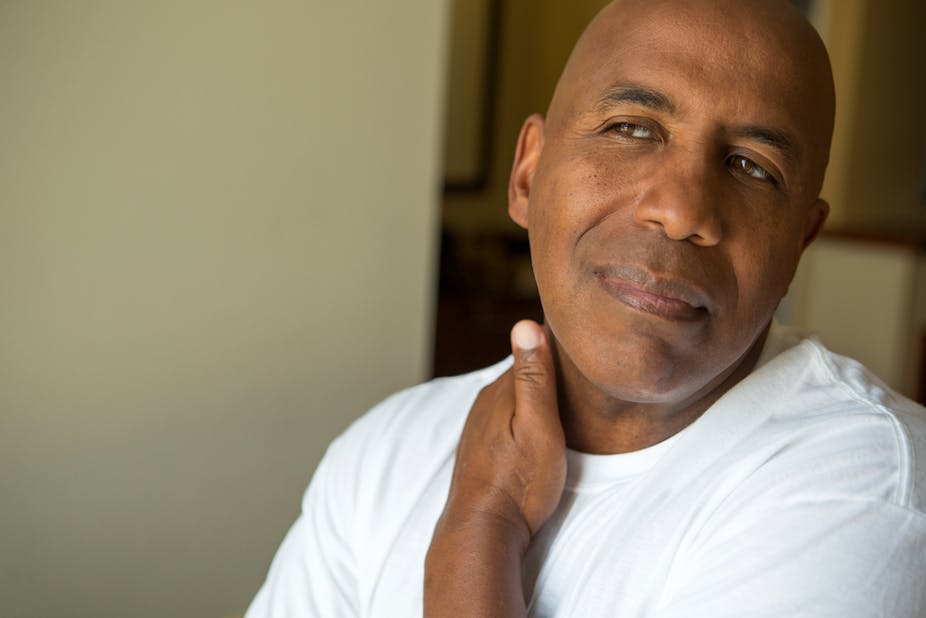Hodgkin’s lymphoma is an uncommon cancer that targets the immune system. It starts off as a painless swelling in the neck, armpit or groin. The Conversation Africa’s health editor Joy Wanja Muraya asked Professor Nicholas Abinya to explain the disease, its stages of development and treatment.
What is Hodgkin’s disease?
Hodgkin’s disease, also known as Hodgkin’s lymphoma, is a type of cancer that affects a part of the immune system known as the lymphatic system. It accounts for about 4% of all cancerous growths. But there are marked differences among communities and countries.
I have conducted a great deal of my research about cancer in Kenya. The incidence of Hodgkin’s lymphoma in the country is not known, but the Nairobi and Eldoret cancer registries are beginning to shed some light on its prevalence.
The disease is more common in men with a ratio of about 4:3 noted in most reports. But this varies between communities. A study we carried out on Hodgkin’s disease at the Kenyatta National Hospital in the 1990s showed that there was a male to female ratio of 2:1 with 87% of the patients who were younger than 20.
The higher number of men with the disease compared to their female counterparts is evident in most black communities globally. But it’s interesting to note that its age of occurrence is known to have two peaks; between the ages of 15 and 30 and between 50 and 70.
What causes it?
The cause of the disease is largely unknown, though certain conditions are known to put people at higher risk.
Reports from developed countries indicate that the main risks for developing it are family history and a previous infection by a virus known as Epstein-Barr Virus. This belongs to the herpes family of viruses. Sadly, this kind of association of the virus with cancer may go undetected in developing countries where health research is not a priority.
Some observations in the US have suggested a link with urban affluence as opposed to a rural farming childhood influence. Survivors of atomic bomb explosions in Japan during the Second World War reported more cases of Hodgkin disease than those who were far away from the explosions’ epicentre.
An unpublished study that we carried out in Kenya in the 1990’s suggested that this disease clustered in the country’s highland, high potential agricultural areas especially those that grow tea. This suggests that a virus – or a cancer causing chemical relating to tea or tea growing – may be responsible.
What are the symptoms?
Most patients will seek a doctor’s consultation with a painless, unbalanced, firm and discrete growth of the lymph nodes on the neck. It can also occur in other places where lymph nodes are situated such as above the diaphragm. But it’s important to note that the disease is not restricted to lymph nodes and may involve other body organs.
Other non specific symptoms include fever, sweating – especially at night, itching, severe pain in one or more lymph node chains several minutes after drinking alcohol or non alcoholic beverages.
How is the disease diagnosed?
Choosing the most appropriate treatment depends on when it is diagnosed. Other factors that influence the outcome of treatment include a person’s gender, their age (specifically if they are over 40) and if they have anaemia at the time of diagnosis.
For diagnosis a thorough physical examination is important. Laboratory tests are also important to measure the levels of red blood cells, white blood cells and platelets. Others are liver function tests, kidney function assessment and screening for hepatitis B and C viruses, and also HIV.
It may also be necessary to carry out a bone marrow biopsy. This involves the removal and examination of marrow to see if the cancer has spread. X-rays and scans of the neck, chest, abdomen and the pelvis are also necessary because they may detect the diseased areas.
The most popular staging classification for Hodgkin disease is the Cotswold’s modification of the Ann Arbor staging classification. Stage One: the disease is in a single lymph node region or a structure with lymph nodes like the spleen and other body parts. Stage two: two or more lymph nodes on the same side of the diaphragm are affected. It may also mean that cancer was found in one lymph node region as well as in a nearby non lymphoid organ. Stage three: lymph node regions or structures on both sides of the diaphragm are affected. Stage four: the cancer is found outside the lymph nodes and has spread to other parts of your body.
The disease is also further staged as A or B. When there are no symptoms, it is graded as A and when symptoms like fever, weight loss or drenching sweats are present, it is staged as B.
What treatments are available?
For years, poor quality equipment hampered effective treatment. The first evidence that it was responsive to nitrogen mustards was in 1943 but the results were only published after the Second World War.
Today treatment depends on the stage the disease has reached. The main options are radiation and chemotherapy.
With the current treatment, the early stage of the disease is curable in more than 90% of cases.
There are also emerging treatments in clinical trials that have shown impressive results in treating Hodgkin’s lymphoma.
It’s very important to note that if treatment is not planned and executed professionally, resistance develops and cure is impossible.
This is an edited version of a chapter in the book Drug management of haematologic neoplasms by Professor Nicholas Anthony Othieno-Abinya

